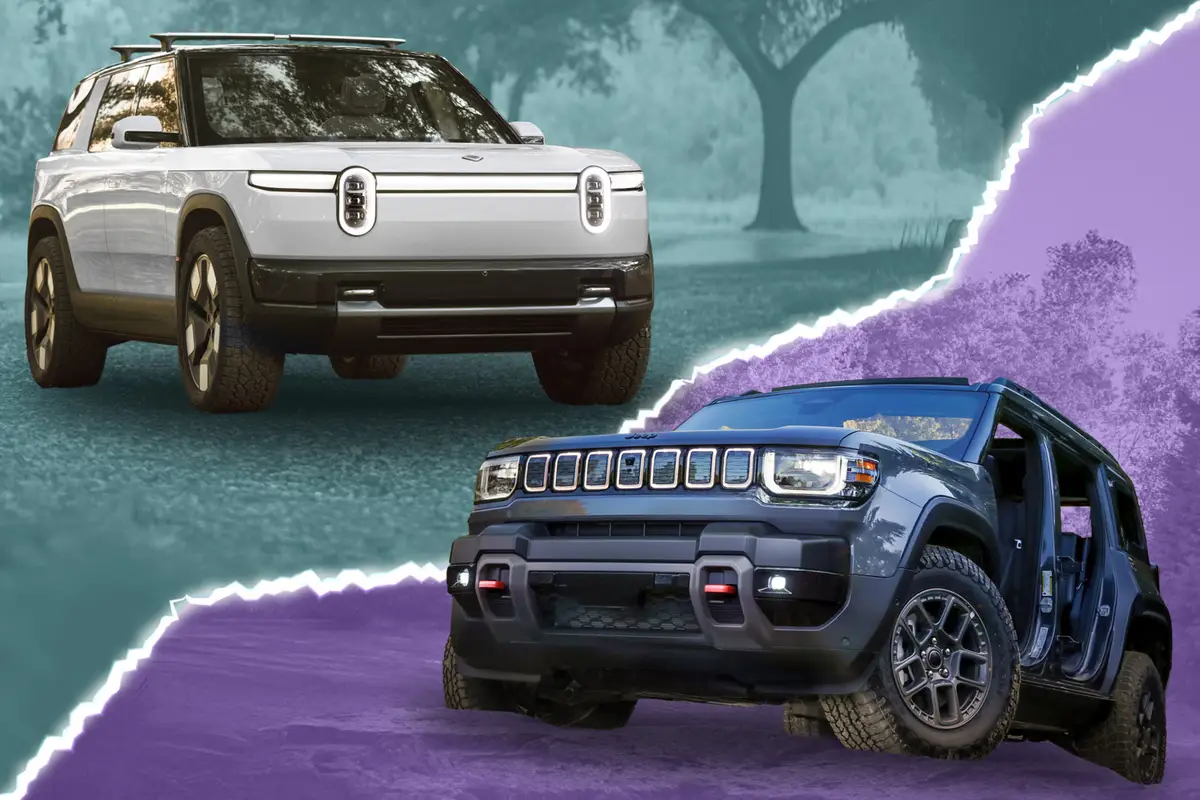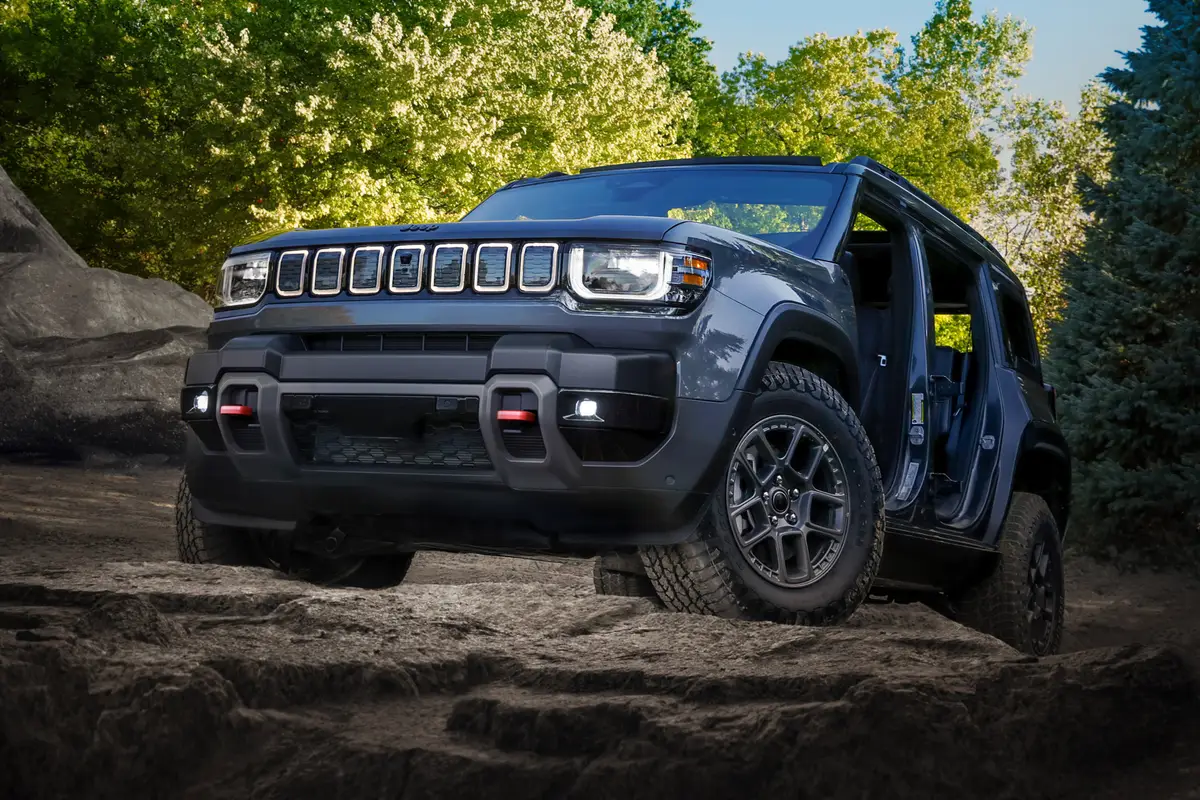The Morning Call and Mcall.com's view
The Cadillac Cimarron has finally come of age. This small sport/luxury four-door sedan no longer looks like something left as an afterthought on Cadillac’s doorstep by General Motors. And now, too, it has performance to match the European sport sedans GM considers its competition. Quite a neat trick – but it should be noted that it took more than three years to pull it off.
Based on the GM’s J-car, the Cimarron made its entrance in 1982 as the small car in the Cadillac lineup. The rationale, at the time, went like this: If people are willing to spend lots of money on small upscale American car? The idea was sound – after all, everybody else eventually got into the act – and the original Cimarron was certainly a worthwhile alternative. But it was never really taken seriously by those in its intended market. One of the big reasons was, no doubt, that it was too closely associated with the Chevy Cavalier, which, in typical GM clone designing, it did resemble strongly.
This year’s Cimarron, however, finally looks like a Cadillac – especially in front-end styling. The whole front end was stretched by almost five inches to accommodate the new optional V-6, which helps it get away from the stubby J-car look. The new cross-hatch grille, flush-mounted hood ornament and built- in foglamps help with the European look. The test car (supplied by Daniels Cadillac-BMW, 1327 Tilghman St., Allentown) also had the optional lower body accent molding that looks remarkably (coincidentally?) similar to the molding on the Mercedes-Benz. This, obviously, gave it an even stronger European sport sedan look.
The front-wheel drive Cimarron is not a large car. It has a wheelbase of 101.2 inches; overall length, 177.9 inches; width, 65 inches; height, 52 inches, and curb weight, 2,600 pounds. The Cimarron has an EPA volume index of 102 cubic feet (89 passenger/13 luggage volume) which makes it a compact, but barely. (A compacthas 100-110 cubic feet of index volume.)
The two front seats are good sized and should accommodate drivers and passengers of various sizes and shapes. Tall persons will find head room somewhat tight. The back seat will give two adults a fair amount of room if the front seats aren’t extended fully rearward. The trunk, although not large, has a flat floor and will hold a reasonable load if carefully packed.
The interior has an expensive look to it. Leather upholstery (or, more accurately, leather seating surfaces) is standard equipment. The leather is deeply pleated and features high side bolsters, which means you won’t slide around during fast cornering. The carpeting is thick and also rich looking. Apparently a lot of sound deadening material was spread around the interior since the Cimarron is quiet.
The test car was equipped with the new optional electronic cluster. This package features blue-green vacuum fluorescent displays for the speedometer and odometer, as well as bar graphs for battery volts, engine coolant temperature and oil pressure. The tachometer is a new design and has a horizontal bar graph with yellow and red line reminders. All up-to-date and state-of-the-art. But, personally, I prefer the standard equipment mechanical cluster and gauge package. This features a big round sweep speedometer and tachometer as well as the other gauges. Much more traditional and sporty looking. Also, the standard gauges will save you $238.
The Cimarron is an easy-to-drive vehicle, in the Cadillac mode, but also is quite responsive to the driver’s demands, thanks to the standard sport suspension. This year, however, the suspension is retuned even further to handle the additional power and torque of the optional V-6. The suspension is fully gas-charged – Delco gas-charged struts up front and Bilstein-Delco gas- charged shocks in the rear – and has larger stabilizer bars (for increased roll control) and stiffer spring rates (for flat ride characteristics). Front suspension features MacPherson struts while the rear has a semi-independent, trailing arm, twist axle arrangement. The test car’s handling was aided even further by the optional Goodyear GT P205/60R14 tires mounted on 14-by 6-inch aluminum alloy wheels. (Standard are P195/70R13 tires on 13-by 5.5-inch aluminum alloy wheels.).
The standard powerplant is a 121 inch (2 liter) four with throttle body fuel injection that is rated at 88 horsepower at 4,800 rpm and 110 foot pounds torque at 2,400 rpm. The standard transmission is a five-speed manual, and a three-speed automatic is available as an option. This engine, with either transmission, should provide adequate performance for all Lehigh Valley driving conditions. With this powerplant, however, enthusiasts need not apply.
The V-6, as can be expected, does provide a lot more juice. The V-6, which features a new multi-port fuel injection induction system (one injector for each cylinder), measures 173 cubic inches (2.8 liters) and is rated at 129 horsepower at 4,800 rpm and 159 foot pounds torque at 3,600 rpm. This basic engine has been around General Motors for a couple of years and is a well- tested unit. With the new fuel injection system, it is not only lively but very smooth running.
The standard transmission is a four-speed manual but the test car had the optional three-speed automatic that didn’t prove to be a handicap. The V-6 and automatic went from zero to 60 mph in a shade over 10 seconds. This isn’t bad at all. In fact, the V-6 Cimarron was the fastest accelerating Cadillac I ever drove – and this includes Cadillacs with the 500-cubic-inch V-8s that were available until 1976.
The test car averaged 16 miles per gallon for city driving and 25 mpg over the highways. Not bad, not great. Interestingly, the automatic version is rated higher than the four-speed manual version – 20 mpg city/26 mpg highway compared to 18 mpg city/23 mpg highway. Who knows, maybe Cadillac is saving a five-speed manual for next year?
For all it offers, the Cimarron is a reasonably priced vehicle, especially when you consider the class it is competing in. The suggested retail price on the Cimarron is $12,962. Standard equipment includes: 2 liter engine and five- speed manual transmission, power brakes, power rack-and-pinion steering, touring suspension, aluminum wheels, air conditioning, AM-FM stereo with digital display and clock, automatic antenna, instrument and gauge package, electric rear window defogger, reclining front seats, six-way power driver’s seat, leather upholstery, cruise control, leather trim steering wheel, power windows and door locks, electric outside mirrors, power trunk lid release, fog lamps, soft ray glass and locking fuel door. In other words, a very complete car.
The test car at $16,138, obviously, was even more complete. This price includes a destination charge of $370 and options totaling $2,806. These included: pop-up sunroof, $310; lower body accent molding, $450; illuminated vanity mirrors, $95; 2.8 liter V-6, $560; automatic transmission, $350; bigger wheels, $40; bigger tires, $94; upgraded radio (seek-scan feature and cassette player), $223; twilight sentinel, $85; electronic instruments, $238; heavy- duty radiator, $45; gas suspension, $100 (required with the V-6 engine); deck lid luggage rack, $130, and floor and trunk mats, $86.
Latest news



